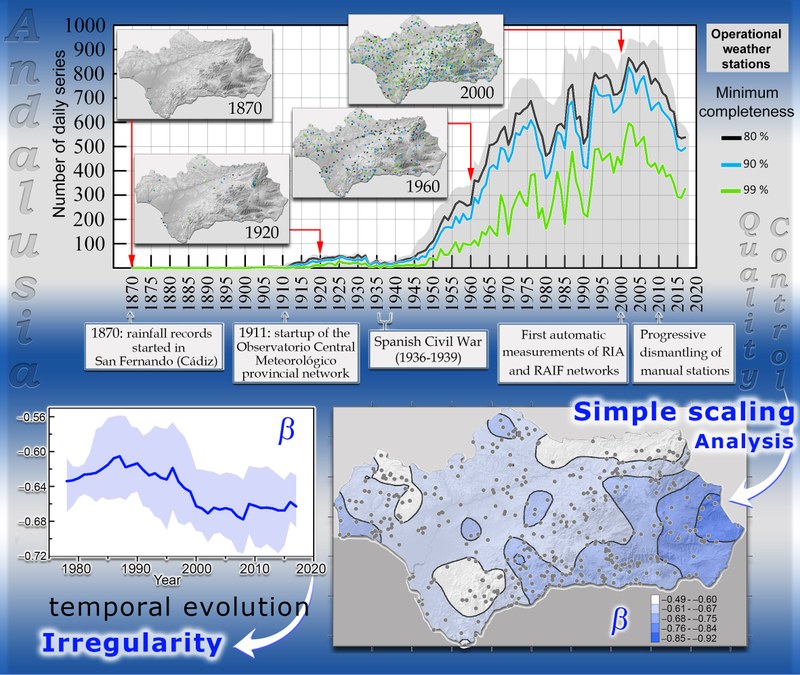Analysis of the last two centuries of rainfall records in Andalusia for the detection of possible changes caused by global warming
Jun 19, 2022
As a result of a collaboration with researchers from the University of Córdoba, M. Carmen Casas and Raúl Rodríguez have evaluated the quality of the rainfall data of Andalusia available since 1870, long before the first modern meteorological stations were put into operation, and have analyzed the different rainfall patterns in the region in pursuit of the detection of possible changes caused by global warming
The recovery and analysis of historical rainfall data are topics of growing interest currently for weather and climate services around the world, since a better understanding of past climate variability can be essential to improve future climate change predictions.
Researchers from the Department of Physics of the Universitat Politècnica de Catalunya M. Carmen Casas and Raúl Rodríguez have led the studies published in the journals Theoretical and Applied Climatology and Water, with the contribution of Xavier Navarro and Ricard Kirchner, also professors from the Department of Physics, and researchers from the University of Córdoba and the Barcelona Supercomputing Center. These articles present the evaluation of the quality of the Andalusian rainfall database available from 1870 to the present, and the analysis of the different pluviometric regimes in the region. The researchers have used a quality control procedure that has already been used for a similar historical database of Catalonia, specially adapted to the particular characteristics of a semi-arid region such as Andalusia. The researchers have adjusted and tested the new version of the procedure for more than fifteen million daily rainfall data recorded at 1,947 measurement stations in Andalusia. Using a selection of the 377 annual series of daily rainfall with better quality, a scaling invariance analysis has been carried out to categorize the different areas of the region according to the irregularity of their rainfall pattern. The spatial distribution of the simple scaling exponent has captured the increasing influence eastwards of the Mediterranean Sea, towards the drier areas clearly influenced by Mediterranean disturbances, with a high proportion of convective-type precipitation.
The study has allowed the calculation of the generalized equations of the intensity-duration-frequency (IDF) curves, of great hydrological interest, for the eight Andalusian provincial capitals. In addition, the temporal trends of the simple scaling exponent have been studied in the last four decades for the different areas with the aim of determining if changes in their rainfall patterns due to global warming can be detected. The average value of this parameter for all of Andalusia has shown a decreasing trend over the last 40 years, compatible with a possible increase in the irregularity of rainfall patterns for some areas of the region, especially the easternmost ones. This result would be in line with the projections of some regional climate models pointing to a potential increase in torrential rain for the 21st century, with isolated episodes of high rainfall intensity becoming more frequent.
A simple scaling analysis of rainfall in Andalusia (Spain) under different precipitation regimes Casas-Castillo, M.C.; Rodríguez-Solà, R.; Llabrés-Brustenga, A.; García-Marín, A.P.; Estévez, J.; Navarro, X. Water (2022), 14, 1303. DOI: 10.3390/w14081303
A quality control procedure for long-term series of daily precipitation data in a semiarid environment. Estévez, J.; Llabrés-Brustenga, A.; Casas-Castillo, M.C.; García-Marín, A.P.; Kirchner, R.; Rodríguez-Solà, R. Theoretical and Applied Climatology (2022). DOI: 10.1007/s00704-022-04089-2

Share: